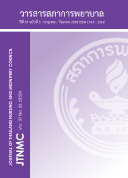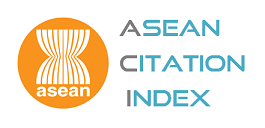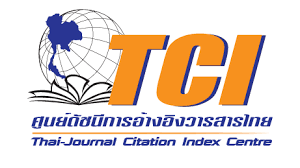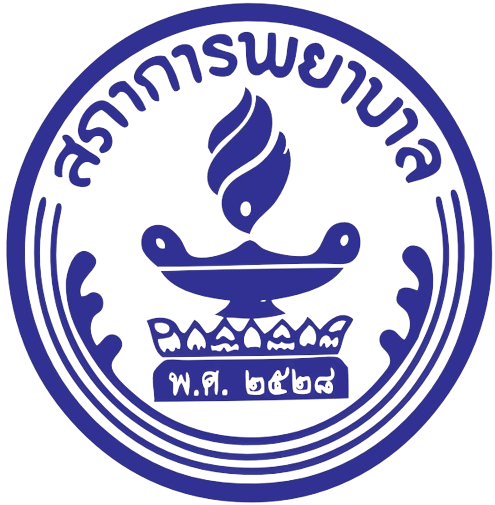การพัฒนารูปแบบการวางแผนจำหน่ายแบบบูรณาการในผู้ป่วยโรคหลอดเลือดสมอง
คำสำคัญ:
การวางแผนจำหน่ายแบบบูรณาการ, ผู้ป่วยโรคหลอดเลือดสมอง, ญาติผู้ดูแล, ความพร้อมในการดูแล, ความเครียดจากการดูแลโดยตรง, คุณภาพชีวิตบทคัดย่อ
วัตถุประสงค์: เพื่อพัฒนารูปแบบการวางแผนจำหน่ายแบบบูรณาการในผู้ป่วยโรคหลอดเลือด สมองทางอายุรศาสตร์ และประเมินผลลัพธ์ของรูปแบบการวางแผนจำหน่ายแบบบูรณาการในผู้ป่วย โรคหลอดเลือดสมองทางอายุรศาสตร์
การออกแบบวิจัย: การวิจัยและพัฒนา (Research & Development)
การดำเนินการวิจัย: มี 4 ระยะ คือ ระยะที่ 1 วิเคราะห์สถานการณ์การวางแผนจำหน่าย ระยะที่ 2 พัฒนารูปแบบฯ ระยะที่ 3 ทดลองใช้รูปแบบฯกับญาติผู้ดูแลและผู้ป่วยจำนวน 2 คู่ และปรับปรุง เพื่อ ความเหมาะสม ระยะที่ 4 นำรูปแบบฯ จากระยะที่ 3 ไปใช้ และประเมินผลลัพธ์โดยการออกแบบวิจัย กึ่งทดลองแบบ 2 กลุ่มวัดหลังการทดลอง กลุ่มตัวอย่างเป็นญาติผู้ดูแลและผู้ป่วยโรคหลอดเลือดสมอง ตามคุณสมบัติที่กำหนด จำนวน 30 คู่ แบ่งเป็นกลุ่มควบคุมและกลุ่มทดลองอย่างละ 15 คู่ กลุ่มควบคุม ได้รับการวางแผนจำหน่ายตามปกติ ส่วนกลุ่มทดลอง ได้รับการวางแผนจำหน่ายแบบบูรณาการฯ เครื่องมือ ที่ใช้ในการเก็บรวบรวมข้อมูลประกอบด้วย 2 ส่วน คือ ส่วนของญาติผู้ดูแล ได้แก่ ข้อมูลส่วนบุคคล แบบประเมิน ความพร้อมในการดูแล แบบประเมินความเครียดจากการดูแลโดยตรง และแบบประเมินคุณภาพชีวิตของ ผู้ดูแล ส่วนของผู้ป่วย ได้แก่ ข้อมูลส่วนบุคคล แบบประเมินภาวะแทรกซ้อนที่สามารถป้องกันได้ และแบบบันทึก การกลับมารักษาซ้ำวิเคราะห์ข้อมูลโดยใช้สถิติเชิงพรรณนา การทดสอบไคสแควร์และการทดสอบที
ผลการวิจัย: ด้านญาติผู้ดูแล พบว่า ก่อนจำหน่าย ญาติผู้ดูแลกลุ่มทดลองมีคะแนนเฉลี่ยความพร้อมในการดูแลและคุณภาพชีวิตสูงกว่ากลุ่มควบคุมอย่างมีนัยสำคัญทางสถิติ (p<.05) แต่คะแนนเฉลี่ยความเครียดจากการดูแลโดยตรงไม่แตกต่างกัน ส่วนภายหลังจำหน่าย 1 เดือน พบว่า กลุ่มทดลองมีคะแนนเฉลี่ยความพร้อมในการดูแลและคุณภาพชีวิตสูงกว่ากลุ่มควบคุมอย่างมีนัยสำคัญทางสถิติ (p<.05) และมีคะแนนเฉลี่ยความเครียดจากการดูแลโดยตรง ต่ำกว่ากลุ่มควบคุมอย่างมีนัยสำคัญทางสถิติ (p<.05) ด้านผู้ป่วย พบว่า ทั้งกลุ่มทดลองและกลุ่มควบคุมไม่พบภาวะแทรกซ้อน ส่วนการกลับมารักษาซ้ำพบว่า กลุ่มควบคุมกลับมารักษาซ้ำ 2 รายในขณะที่กลุ่มทดลองไม่พบการกลับมารักษาซ้ำ
ข้อเสนอแนะ: โรงพยาบาลควรมีนโยบายในการนำรูปแบบการวางแผนจำหน่ายฯ ไปใช้กับผู้ป่วยโรคหลอดเลือดสมองทางอายุรศาสตร์ เพื่อส่งเสริมความพร้อมในการดูแลผู้ป่วยและการมีคุณภาพชีวิตที่ดีของญาติ
Downloads
เอกสารอ้างอิง
Centers for Disease Control and Prevention (CDC). Prevalence of stroke: United States, 2006–2010. MMWR Morb Mortal Wkly Rep 2012;61:379–82.
Division of strategy and planning, Office of the permanent Secretary, Ministry of public health. Reported public health status of Thailand 2020. Bangkok: the printing office to assist veterans organization; 2020.
Division of Information, MahasarakhamHosipital. Reported data of patients with stroke 2021.Mahasarakham: the printing office to assist veterans organization; 2021.
Division of non-communicable diseases, Department of Disease Control. Ministry of public health. Reported number and rate of inpatients with stroke. Bangkok: the printing office to assist veterans organization; 2018. Available from: http://www.thaincd.com/2016/ mission/documents-detail.php?id=13684&tid= 32&gid=1-020
Chuyingsakultip N, Chanchai A, Gadudom P, Kaewdang K. Quality of life of acute ischemia stroke patients in the stroke unit, Rayong Hospital. Journal of Phrapokklao Nursing College 2016; 27: 54-64. (in Thai)
Yubolchit N, Praekhao C, Tiamkao S. Quality of life of acute ischemia stroke patients in middle secondary hospital in health region 7. North-Eastern Thai Journal of Neuroscience 2019; 14: 15-36. (in Thai)
Chayawatto C. Depression in the caregivers of stroke patients.Region 4-5 Medical Journal 2016; 35: 14-27. (in Thai)
Naylor M, Shaid EC, Carpenter D, Gass B, Levine C, Li J, et al. Components of comprehensive and effective transitional Care. J Am GeriatrSoc [internet]. 2017 [cited 2021/11/9].65;1119-1125. Available from: https://www.researchgate.net/publication/ 315776473
Moonthee W, Mongkong S,Sirapo-ngam Y, Leelacharas S. Effect of transitional care program for stroke patients and family caregivers for patient’s activities of daily living, complication and satisfaction. Thai Journal of Nursing Council 2016; 31: 133-48. (in Thai)
Polit DF and Hungler BP. Nursing research: principles and methods. 6th ed. Philadelphia: J.B. Lippincott; 1999.
Archbold PJ, Stewart BJ. Family Caregiving Inventory [Unpublished manuscript]Portland: Oregon Health Sciences University; 1986.
Wirojratana V. Development of the Thai family care inventory [Doctoral dissertation, Portland: Oregon Health &Science University; 2002.
Boonchuwong O, Saneha C, Pinyopasakul W, Nilanont Y. Factors influencing readiness of caregivers of patients with stroke before hospital discharge. Journal of Nursing Science 2017; 35: 46-5. (in Thai)
Sutthilak C, Wirojratana V, Puwarawuttipanit W, Cheewakriengkrai L. Factors predicting health status on caregivers of elderly people with dementia. Journal of The Royal Thai Army Nurses 2018 ; 9: 191-99.(in Thai)
Mahatnirankul S. Comparision of the World Health Organization’s quality of life survey, a set of 100 indicators and 26 indicators. Chaingmai: Suanprung Psychiatric Hospital; 1998.
Nakasuwan V. The effectiveness of health promotion program for the elderly on the quality of life in the community. Journal of The Police Nurses 2020 ; 12: 171-80.(in Thai)
Neurological Institute of Thailand. Clinical nursing guideline for stroke. Bangkok: Tanapress; 2016.
Piumboriboon K, Pongcharoen C. Development of care model for stroke in ChoaprayaYommaraj Hospital at Supanburi. Nursing Journal of The Ministry of Public Health 2018 ; 19: 191-99. (in Thai)
Bamrasnaradura Infectious Diseases Institute. Guide to diagnosis of infections in hospitals. Bangkok: Aksorngraphic & desing; 2018.
Haesler E, et al. Prevention and treatment of pressure ulcers: reference guidelines [internet]. 3nd ed. EPUAP/ NPIAP/PPPIA: 2019[cited in 2022 March 29]. Available from: https://www.epuap.org/wp-content/ uploads/2021/04/qrg-2019-thai-04-21.pdf
Paksee N, Sirapo-ngam Y, Monkong S, Leelacharas S. Effect of transitional care program for stroke patients and family caregivers on caregiver’s preparedness, stress, adaptation and satisfaction [Dissertation]. Bangkok: Mahidol University; 2015.
Pongcharoen C, Maneewong J. The effects of preparing program on readiness among hemorrhagic stroke patient caregiver before discharge at Chaophara Yommaraj Hospital, Suphanburi. Nursing Journal of The Ministry of Public Health 2013 ; 21: 58-70. (in Thai)
Towanabot S, Hanchaiphiboolkul S, Tantirittisak T, Termklinchan T, Laoratanasaeng L, Traicharoenwonr J. Stroke. In: Makornsan S., editor. Thailand medical service profile 2011-2014 [internet]. 1st ed. Bangkok: Department of Medical service; 2014 [cited 2020 July 7]. Available from: http://training.dms.moph.go.th/rtdc/article/2
Siriyong W. Prevalence of stroke and stroke risk factors in Kanchanadit Hospital. Region 11Medical Journal 2018; 32: 863-70. (in Thai)
Tiamkao S. Controlling high blood pressure in stroke patients. North-Eastern Thai Journal of Neuroscience 2021; 16: 14-20.(in Thai) 26. Budratana S. Effects of discharge preparedness program among primary caregivers of patients with ischemic stroke in NongBuaLamphu Hospital. Nursing, Health, and Education Journal 2020; 3: 56-64. (in Thai)
Riablershirun S, Kespichayawattana J. Theeffect ofproblem solving approach program on stress of family caregivers taking care of elderly stroke survivors. Journal of The Police Nurse 2018; 10: 21-9. (in Thai)
Shyu YL,Kuo LM, Chen MC and Chen ST. A clinical trial of an individualised intervention programme for family caregivers of older stroke victims in Taiwan. Journal of Clinical Nursing [Internet]. 2010 [cited 2022 July 23]; 19:1675-85. Available from: https:// onlinelibrary.wiley.com/doi/abs/10.1111/ j.1365-2702.2009.03124.x
Kensakoo T, Sinumpaisit T, Srithumsuk W. The effectiveness of discharge planning’s clinical nursing practice guideline on activity daily livings, hospital readmission and quality of life in ischemic stroke patients. Journal of The Royal Thai Army Nurses 2020; 21: 215-24. (in Thai )
ดาวน์โหลด
เผยแพร่แล้ว
รูปแบบการอ้างอิง
ฉบับ
ประเภทบทความ
สัญญาอนุญาต
ลิขสิทธิ์ (c) 2022 วารสารสภาการพยาบาล

อนุญาตภายใต้เงื่อนไข Creative Commons Attribution-NonCommercial-NoDerivatives 4.0 International License.








